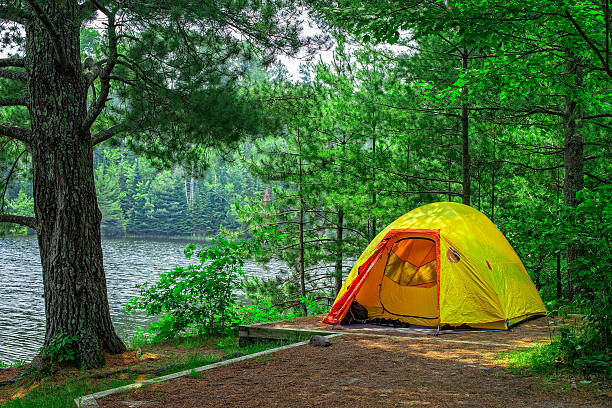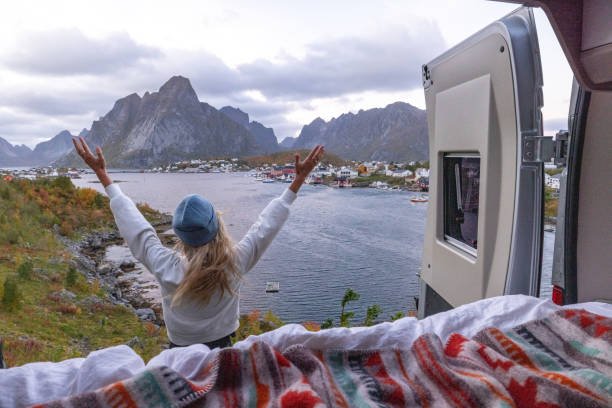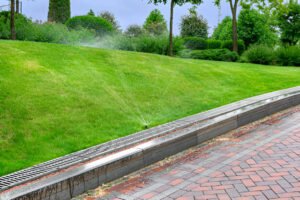Embarking on a solo camping adventure can be an exhilarating and transformative experience. Whether you’re seeking solitude, self-discovery, or simply a break from the hustle and bustle of everyday life, solo camping offers a unique opportunity to connect with nature and yourself. This comprehensive guide will walk you through everything you need to know to plan and execute a successful solo camping trip, from essential gear and safety precautions to campsite selection and outdoor skills. By the end of this article, you’ll be well-equipped to take on the great outdoors on your own terms.
The Benefits of Solo Camping
Before we dive into the practical aspects of solo camping, let’s explore some of the compelling reasons why you might want to give it a try:
- Self-reliance: Solo camping forces you to rely on your own skills and decision-making abilities, fostering a sense of independence and self-confidence.
- Solitude and reflection: Being alone in nature provides a rare opportunity for introspection and personal growth.
- Flexibility: Without having to compromise with others, you can set your own pace and agenda, exploring at your leisure.
- Challenging comfort zones: Stepping out of your comfort zone can lead to personal growth and a sense of accomplishment.
- Connection with nature: Solo camping allows for a more intimate and immersive experience with the natural world.
- Stress relief: Time spent alone in nature can be incredibly restorative, helping to reduce stress and anxiety.
Now that we’ve covered the “why,” let’s move on to the “how” of solo camping for beginners.

Essential Gear for Solo Camping
Having the right equipment is crucial for a safe and enjoyable solo camping experience. Here’s a comprehensive list of essential gear to consider:
Shelter
- Tent or hammock with rain fly
- Sleeping bag appropriate for the climate
- Sleeping pad or air mattress
- Tarp (for additional shelter or ground cover)
Clothing
- Moisture-wicking base layers
- Insulating mid-layers (fleece or wool)
- Waterproof outer layer (jacket and pants)
- Hiking boots or sturdy shoes
- Extra socks and underwear
- Hat and gloves (if needed)
Cooking and Food
- Portable stove and fuel
- Cookware (pot, pan, utensils)
- Water filtration system or purification tablets
- Food storage container or bear canister
- Lightweight, nutritious meals and snacks
Navigation and Safety
- Map and compass (and know how to use them)
- GPS device or smartphone with offline maps
- First-aid kit
- Multi-tool or knife
- Headlamp or flashlight with extra batteries
- Whistle
- Fire starter (matches, lighter, firestarter)
Miscellaneous
- Backpack or daypack
- Sun protection (sunscreen, sunglasses, hat)
- Insect repellent
- Toiletries and personal hygiene items
- Trash bags for waste management
- Camera or journal (optional)
Remember, the specific gear you’ll need may vary depending on your destination, the time of year, and the length of your trip. Always research the area you’ll be camping in and check local regulations before finalizing your packing list.

Choosing Your Campsite
Selecting the right campsite is crucial for a safe and enjoyable solo camping experience. Here are some factors to consider when choosing your campsite:
Location and Accessibility
- Research campgrounds or backcountry areas that allow solo camping
- Consider your skill level and choose a location that matches your experience
- Ensure you have reliable transportation to and from the campsite
- Check if reservations are required or if it’s first-come, first-served
Safety Considerations
- Choose a site away from potential hazards like dead trees or flash flood areas
- Look for level ground to set up your tent
- Ensure access to clean water sources
- Be aware of local wildlife and take necessary precautions (e.g., proper food storage)
Amenities and Facilities
- Determine if you need access to amenities like restrooms, showers, or potable water
- Check if campfires are allowed and if there are designated fire rings
- Consider proximity to hiking trails or other recreational activities
Leave No Trace Principles
- Select a site that’s already been impacted by camping to minimize your environmental impact
- Camp at least 200 feet away from water sources to protect aquatic ecosystems
- Follow local regulations regarding campsite selection and use
By carefully considering these factors, you can choose a campsite that ensures your safety, comfort, and enjoyment during your solo camping adventure.

Planning Your Solo Camping Trip
Proper planning is essential for a successful solo camping experience. Follow these steps to ensure you’re well-prepared for your adventure:
Research and Preparation
- Choose your destination and research the area thoroughly
- Check weather forecasts and pack accordingly
- Obtain necessary permits or reservations
- Inform a trusted friend or family member of your plans and expected return date
- Create a detailed itinerary and leave a copy with your emergency contact
Meal Planning
- Plan simple, nutritious meals that are easy to prepare
- Pack lightweight, non-perishable foods
- Consider pre-packaging meals to save time and reduce waste
- Bring extra food in case of unexpected delays
Skill Development
- Practice setting up your tent at home before your trip
- Learn basic navigation skills using a map and compass
- Familiarize yourself with basic first aid and wilderness survival techniques
- Practice using your camping stove and other gear before your trip
Emergency Preparedness
- Create an emergency plan and share it with your contact person
- Know how to signal for help in case of an emergency
- Carry a fully charged mobile phone and a backup power bank
- Consider investing in a personal locator beacon (PLB) or satellite messenger for remote areas
By following these planning steps, you’ll be well-prepared for your solo camping adventure and can focus on enjoying the experience with peace of mind.

Safety Tips for Solo Campers
Safety should be your top priority when camping alone. Here are some essential safety tips to keep in mind:
General Safety Precautions
- Always let someone know your plans and expected return date
- Stick to your planned itinerary as much as possible
- Carry identification and emergency contact information
- Be aware of your surroundings and trust your instincts
- Avoid sharing details about your solo status with strangers
Wildlife Safety
- Research local wildlife and know how to respond to encounters
- Store food and scented items properly to avoid attracting animals
- Make noise while hiking to alert wildlife of your presence
- Carry bear spray if camping in bear country
Campfire Safety
- Follow local fire regulations and restrictions
- Only build fires in designated areas or existing fire rings
- Keep fires small and manageable
- Fully extinguish fires before leaving your campsite or going to sleep
Weather Safety
- Check weather forecasts regularly and be prepared for changing conditions
- Know the signs of hypothermia and heat exhaustion
- Seek appropriate shelter during severe weather events
- Be cautious of lightning strikes and avoid open areas during thunderstorms
Navigation Safety
- Always carry a map and compass, and know how to use them
- Mark your campsite location on your map before exploring
- Use trail markers or natural landmarks to help you find your way back
- Consider using a GPS device or smartphone app for additional navigation support
By following these safety tips, you can minimize risks and enjoy a secure solo camping experience.
Outdoor Skills for Solo Campers
Developing a set of essential outdoor skills will enhance your solo camping experience and boost your confidence in the wilderness. Here are some key skills to focus on:
Fire Starting
- Learn multiple fire-starting techniques (matches, lighter, ferrocerium rod)
- Practice building fires with different types of tinder and kindling
- Understand how to maintain and control a campfire safely
Water Purification
- Master various water purification methods (filtration, chemical treatment, boiling)
- Learn to identify safe water sources in the wilderness
- Understand the importance of proper hydration and how much water you need daily
Knot Tying
- Learn essential camping knots (bowline, taut-line hitch, clove hitch)
- Practice using knots for various camping tasks (tarp setup, gear organization)
Weather Reading
- Understand basic cloud formations and what they indicate about upcoming weather
- Learn to read natural signs that may predict weather changes
- Know how to protect yourself and your gear in different weather conditions
Leave No Trace Principles
- Familiarize yourself with the seven Leave No Trace principles
- Practice minimal impact camping techniques
- Learn how to properly dispose of waste and minimize your environmental footprint
Basic First Aid
- Take a wilderness first aid course if possible
- Know how to treat common outdoor injuries and ailments
- Assemble and know how to use a comprehensive first aid kit
By developing these outdoor skills, you’ll not only enhance your solo camping experience but also increase your self-reliance and safety in the wilderness.
Tips for Enjoying Your Solo Camping Experience
Now that we’ve covered the essentials of planning, safety, and skills, let’s explore some tips to help you make the most of your solo camping adventure:
Embrace Solitude
- Use this time for self-reflection and personal growth
- Practice mindfulness and meditation techniques in nature
- Enjoy the freedom to set your own schedule and pace
Connect with Nature
- Take time to observe wildlife and natural phenomena
- Learn to identify local plants and animals
- Practice nature photography or sketching to capture your experiences
Challenge Yourself
- Set personal goals for your trip (e.g., hiking a certain distance, learning a new skill)
- Push your comfort zone in safe and manageable ways
- Reflect on your accomplishments at the end of each day
Stay Entertained
- Bring a book or e-reader for downtime
- Practice bushcraft skills or try nature-based crafts
- Stargaze and learn to identify constellations
Document Your Journey
- Keep a journal to record your thoughts and experiences
- Take photos or videos to preserve memories
- Consider starting a blog or social media account to share your adventures
Practice Self-Care
- Prioritize rest and relaxation
- Maintain good hygiene practices even in the wilderness
- Listen to your body and adjust your plans if needed
By following these tips, you can create a rich and rewarding solo camping experience that goes beyond mere survival in the wilderness.

FAQs About Solo Camping
Q: Is solo camping safe for beginners?
A: Solo camping can be safe for beginners if proper precautions are taken. Research your destination, inform others of your plans, and develop essential outdoor skills before your trip.
Q: What’s the best way to handle food storage when camping alone?
A: Use bear-resistant containers or hang food in a bear bag at least 10 feet high and 4 feet from the tree trunk. Store all scented items, including toiletries, with your food.
Q: How can I overcome fear or anxiety about solo camping?
A: Start with shorter trips close to home, gradually building confidence. Practice your skills beforehand and focus on the positive aspects of solitude and self-reliance.
Q: What’s the most important piece of gear for solo camping?
A: While all gear is important, a reliable shelter (tent or hammock) is crucial for protection from the elements and a sense of security.
Q: How do I handle emergencies when camping alone?
A: Always carry a first aid kit, know basic first aid, and have a plan for signaling for help. Consider carrying a personal locator beacon for remote areas.
Q: Is it okay to camp alone as a woman?
A: Absolutely! Many women enjoy solo camping. Take the same precautions as anyone else, trust your instincts, and consider taking a self-defense class for added confidence.
Q: How much water should I bring for solo camping?
A: Plan for at least 1 gallon (4 liters) per person per day. Always have a reliable water purification method to refill from natural sources.
Q: What’s the best way to navigate when camping alone?
A: Always carry a physical map and compass and know how to use them. GPS devices or smartphone apps can be helpful but shouldn’t be your only navigation tool.
Final Words
Solo camping offers a unique opportunity for adventure, self-discovery, and connection with nature. By following the guidelines in this comprehensive guide, you’ll be well-prepared to embark on your first solo camping experience with confidence and enthusiasm. Remember to prioritize safety, develop essential outdoor skills, and embrace the solitude and freedom that comes with camping alone.










